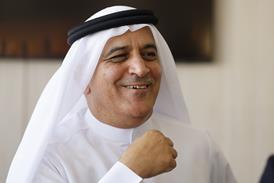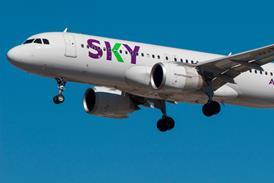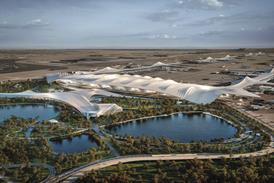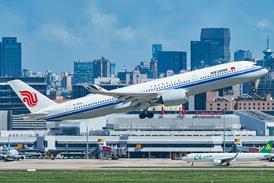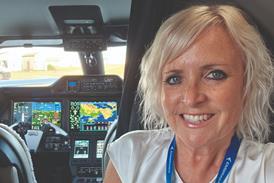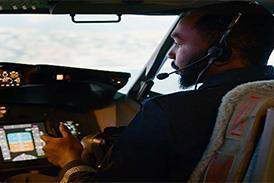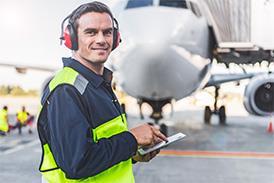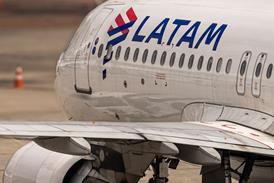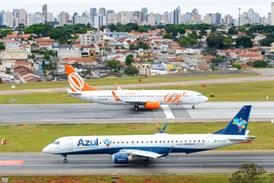Russia is displaying a range of airpower capabilities at the Dubai air show, including prospective updates to the thrust nozzles of the Sukhoi Su-57E fighter, an engine upgrade for existing types, and air-launched weapons.
A model of the Su-57E in the Russian pavilion shows the aircraft with stealthy thrust nozzles that feature two-dimensional thrust vectoring.
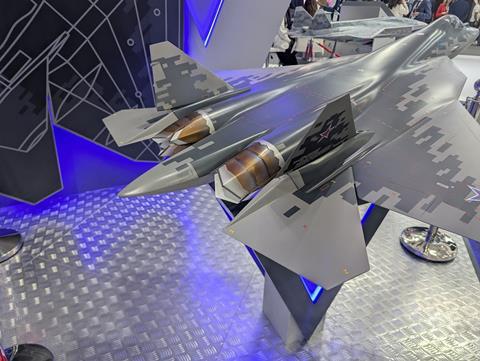
This varies from the Su-57 flying at this year’s Dubai air show and aircraft in service with Russia’s air force. These jets have conventional thrust nozzles fitted to the NPO Lyulka-Saturn Izdeliye 117 – also designated AL-41F – engines that power existing versions of the Su-57.
Russia’s progress with the new thrust arrangement is not clear, but its appearance at the Dubai show suggests that it is promoting the capability to potential international customers.
There are questions about the genuine low-observable characteristics of the Su-57. At air shows, observers have commented that the tolerances around hatches and other surfaces is not as exacting as western stealth types. The jet also features moveable leading-edge extensions, which will impact its radar cross section (RCS).
Moreover, the Su-57 lacks the well-defined S-duct inlets that help shield the engines’ fan faces from radar waves. While Sukhoi uses stealth coatings inside the engines as well as structures to block the face of the engine, the engine is believed to be visible from some angles, hurting the jet’s RCS.
So far, the only nation outside Russia to order the type is Algeria, with a commitment for 14 examples.
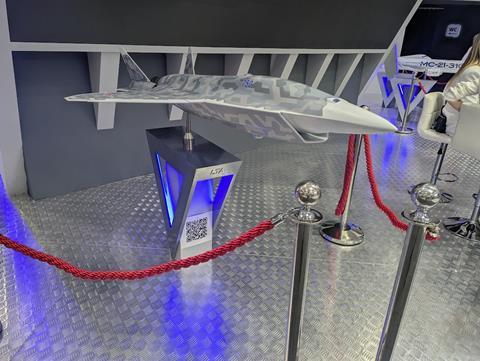
Another notable model is of the Light Tactical Aircraft, or LTA, unmanned combat air vehicle, which resembles the developmental Su-75 Checkmate fighter. The Su-75, for its part, was not in evidence at this year’s show, despite having a high profile at the 2021 show.
In the static park Russia is displaying the Izdeliye 177S engine, touted as a “fifth-generation” upgrade for Sukhoi types that uses the AL-31.
The 177S has apparently gone through extensive testing and is ready for export. The 177S is promoted as having significantly higher thrust, lower fuel consumption, and a substantially longer service life compared to the older AL-31F and AL-31FP variants it is designed to replace.
In addition, Russia is promoting a range of air-launched weapons including the export versions of the Vympel R-73, R-77, and R-37 air-to-air missiles.
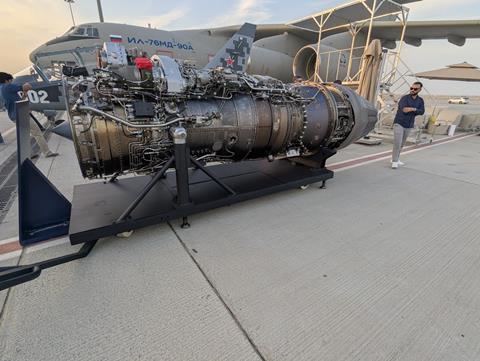
The export version of the long-range R-37, designated RVV-BD, has a range of up to 108nm (200km) and a 60kg (133lb) blast fragmentation warhead. The weapon is initially guided by a datalink, which switches to active radar homing for the final stage of the engagement.
Other notable air-launched weapons Russia is promoting at Dubai include the JSC Kh-35UE anti-ship missile, which resembles the Boeing AGM-84E Harpoon, and the Raduga X-58USHKE, the export mission of the Kh-58 anti-radiation missile. The range of the X-58USHKE is given as up to 132nm, with a claimed speed performance of 2,270kt (4,200km/h). It boasts a large, 149kg warhead optimised for destroying radars.
Russia is also promoting a range of guided bombs, drones, and loitering munitions at the show.

